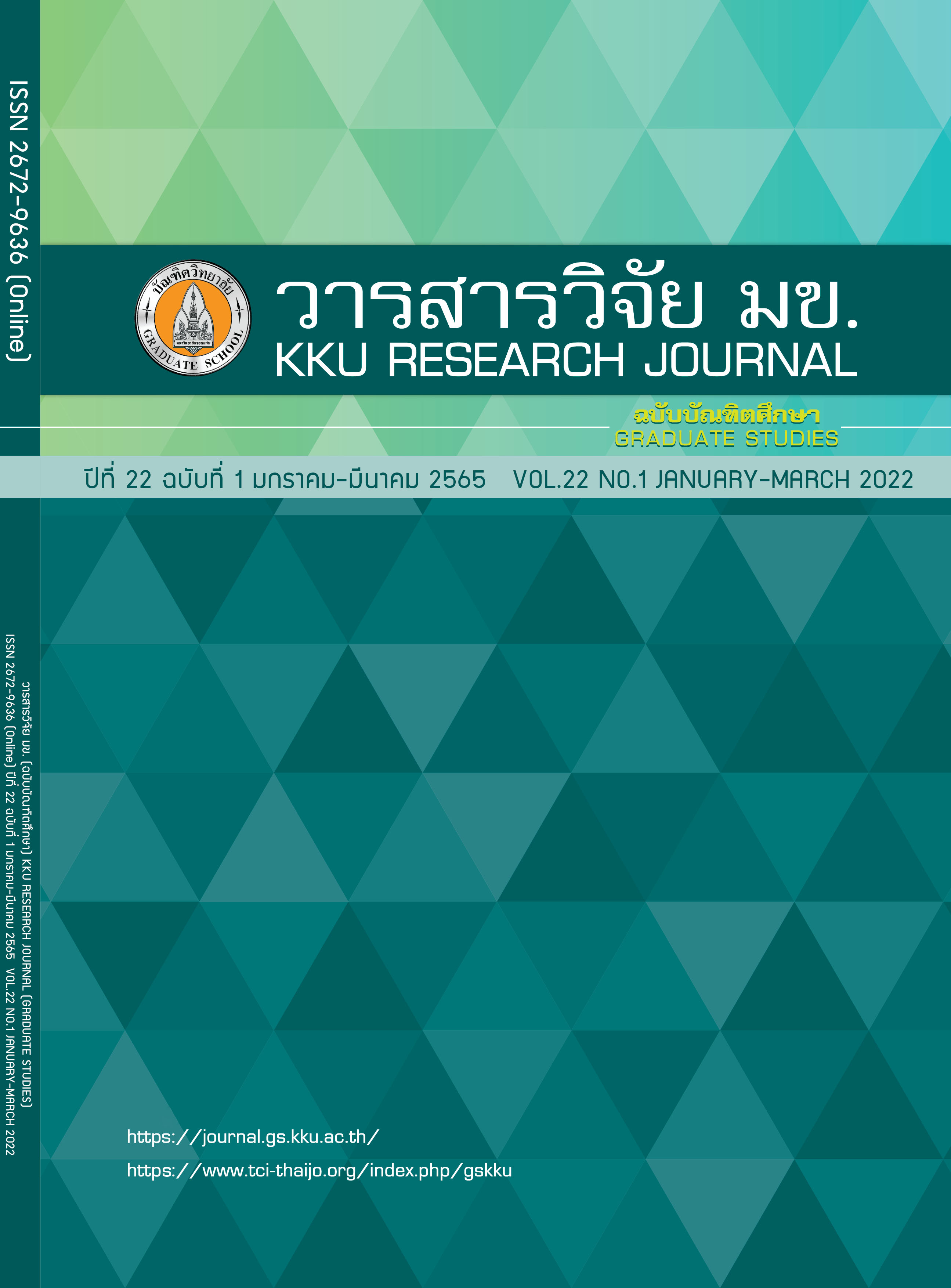Factors Associated with Carbapenem-Resistant Enterobacteriaceae Infection in Somdejphrajaotaksinmaharaj Hospital
Keywords:
Enterobacteriaceae, CarbapenemAbstract
This objective of this research was to examine the factors associated with Carbapenem-resistant Enterobacteriaceae infection. This research was a Cross-sectional analytical study. Data were collected from patient’s medical records in Somdejphrajaotaksinmaharaj Hospital, including patient profile, underlying disease, and present illness. The study was a descriptive research. Data were analyzed using amount of patient, percentage and Chi-square test. The results showed that there were 45 CRE colonized patients found in specimens, divided into Hospital-acquired infection (HAI) group and Colonization group, which are 36 patients and 9 patients respectively. Most of CRE colonized patients are over 60 years old in both groups. In addition, the most of patients were admitted to the internal medicine department. There were 14 days or more of CRE colonized of present on admission. Besides, most of patients were intubated with an endotracheal tube, used urinary catheter and used nasogastric tube more than 7 days. They used to take antibiotic more than two types and the antibiotic types were Cephalosporins, Third and Fourth generation cephalosporins (3rd/4th generations). The result by chi-square showed that the length of stay since admission was statistically significant associated with the carbapenem-resistant Enterobacteriaceae infection.
References
Cohen J, Powderly WG, Opal SM, editors. Infectious diseases. 4th ed. Atlanta: Elsevier; 2017.
Jameson J, Fauci AS, Kasper DL, Hauser SL, Longo DL, Loscalzo J. Harrison's principles of internal medicine. 20th ed. New York: McGraw-Hill; 2018.
Queenan AM, Bush K. Carbapenemases: the versatile beta-lactamases. Clinical Microbiology Reviews. 2007; 20(3): 440-458.
Phumisantiphong U. Incidence of Carbapenem resistant Enterobacteriaceae. Vajira Medical Journal. 2011; 55(3): 265-272. Thai.
Thamlikitkul V. Guideline to control and prevention of antimicrobial resistant bacteria in hospitals. Bangkok: Health Systems Research Institute; 2015.
Sadsee P. The prevalence of Carbapenem resistant Enterobacteriaceae at Somdejphra-choataksinmaharaj Hospital, Tak. Journal of Bamrasnaradura Infectious Diseases Institute. 2019; 13(2): 78-86. Thai.
Piwpong C. Incidence of Carbapenem-resistant Enterobacteriaceae in Suratthani Hospital. Region 11 Medical Journal. 2016; 30(2): 1-12. Thai.
Prevalence of Carbapenem-resistant Enterobacteriaceae (CRE) and control measures to prevent the spread of infections in patients across Trat Hospital. Journal of Health Service Support Department. 2019; 15(3): 51-61. Thai.
Buachum S, Jowtragoon P, Wongphachan S. Factors associated with Carbapenem-resistant Enterobacteriaceae infection among inpatient department of Phichit Hospital. Phichit Public Health Research and Academic Journal. 2020; 1(1): 1-9. Thai.
Stewardson AJ, Marimuthu K, Sengupta S, Allignol A, El-Bouseary M, Carvalho MJ, et al. Effect of Carbapenem resistance on outcomes of bloodstream infection caused by Enterobacteriaceae in low-income and middle-income countries (PANORAMA): a multinational prospective cohort study. The Lancet Infectious Diseases. 2019; 19(6): 601-610.
Yamamoto N, Asada R, Kawahara R, Hagiya H, Akeda Y, Shanmugakani RK, et al. Prevalence of, and risk factors for, carriage of Carbapenem-resistan Enterobacteriaceae among hospitalized patients in Japan. Journal of Hospital Infection. 2017; 97(3): 212–217.
Nicolas-Chanoine MH, Chanoine N, Vigan M, Laouenan C, Robert J. Risk factors for Carbapenem-resistant Enterobacteriaceae infections: a French case-control-control study. European Journal of Clinical Microbiology & Infectious Diseases. 2019; 38 383–393.
Henig O, Weber G, Hoshen MB, Paul M, German L, Neuberger A, et al. Risk factors for impact of Carbapenem–resistant Acinetobacter baumannii colonization and infection: matched case–control study. European Journal of Clinical Microbiology & Infectious Diseases. 2015; 34: 2063–2068.
Jiao Y, Qin Y, Liu J, Li Q, Dong Y, Shang Y. Risk factors for Carbapenem-resistant Klebsiella pneumoniae infection/colonization and predictors of mortality: a retrospective study. Pathogens and Global Health. 2015; 109(2): 68-74.
Torres-Gonzalez P, Cervera-Hernandez ME, Niembro-Ortega MD, Leal-Vega F, Cruz-Hervert LP, Garcia-Garcia L, et al. Factors associated to prevalence and incidence of Carbapenem-resistant Enterobacteriaceae fecal carriage: a cohort study in a Mexican tertiary care hospital. PLoS One. 2015; 10(10): 1-13.
Downloads
Published
Issue
Section
License
Copyright (c) 2022 KKU Research Journal (Graduate Studies)

This work is licensed under a Creative Commons Attribution-NonCommercial-NoDerivatives 4.0 International License.



